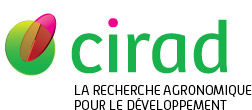Laroche J., Peng Li, Maggia Laurent, Bousquet J.. 1997. Molecular evolution of angiosperm mitochondrial introns and exons. American Journal of Botany, 84 (6), suppl. : 117. Annual Meeting of the American Institute of Biological Sciences and Botanical Society of America, Montreal, Canada, Août 1997.
Autre titre : Evolution moléculaire des introns et exons mitochondriaux des angiospermes
Résumé : Numbers of substitutions per site for 15 protein-coding genes and sixintrons of the plant mitochondria were estimated to compare modes and tempos of evolution between exons and introns, and numbers of insertions-deletions per site also were investigated in introns. Intra-gene homogeneity of numbers of substitutions per site was assessed further among different taxa and between mitochondrial and nuclear paralogs translocated from the mitochondrial genome. Gene-to-gene differences in numbers of substitutions per site were found to be higher for non synonymous than synonymous sites, and this could be due to differential selection if mutation rate is assumed constant for the genome. Some mitochondrial genes have evolved as fastas chloroplast genes, thus faster than previously thought. For coxI, relativerate tests showed that woody taxa evolved slower than annuals at synonymous sites. Generation time, population size, and speciation rate are likely factors involved in this rate heterogeneity. Introns were less constrained than their adjacent exons for both overall numbers of substitutions persite and indels, but, on average, overall numbers of substitutions persite for introns were similar to numbers of synonymous substitutions persite for exons. Correlations were generally high between numbers of substitutions and numbers of indels per site for the same intron. Mitochondrial genes transferred to the nucleus had an accelerated rate of substitution per site, which was most significant at synonymous sites. These differences between paralogs in two different genomes are likely the result of different mutation rates.
Mots-clés Agrovoc : Angiosperme, biologie moléculaire, structure cellulaire, génétique mitochondriale, mitochondrie
Classification Agris : F40 - Écologie végétale
F30 - Génétique et amélioration des plantes
Auteurs et affiliations
- Laroche J.
- Peng Li
-
Maggia Laurent, CIRAD-FORET-FORETS NATURELLES (GUF)
 ORCID: 0000-0001-9975-9081
ORCID: 0000-0001-9975-9081
- Bousquet J.
Autres liens de la publication
- Document en bibliothèque
- Localisation du document : CD_PE750 [(Bibliothèque de Lavalette)] ; BA_BR1194 [(Bibliothèque de Baillarguet)]
Source : Cirad - Agritrop (https://agritrop.cirad.fr/401119/)
[ Page générée et mise en cache le 2025-02-10 ]




